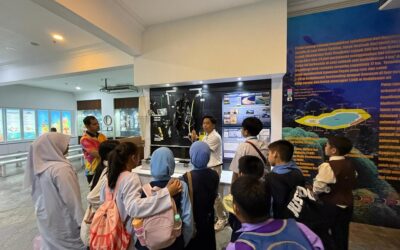So that just happened, back before the holidays. After all the waiting, months – in fact, years – of delays, numerous rounds of meetings, political wrangling (and probably a bit of Machiavellian intrigue and plotting, thrown in for good measure too!!)…at the 11th hour, on the 19th December 2022, the world’s nations finally signed a new treaty to protect and conserve biodiversity for the period 2021-2030.
Now that the dust has settled, and setting aside some suggestions that some nations were unhappy with certain aspects of how the conference was managed and targets were pushed through, I think it appropriate to look at the treaty in its entirety – and in context, to assess what it means for biodiversity in general and Malaysia in particular.
Biodiversity is important to our survival
Say what?
I sometimes get the feeling that many people have the view that “biodiversity” is the preserve of brainiac scientists in white lab coats. Admittedly, for some people it’s a difficult concept to get your head around – I mean, look at the definition of biodiversity:
…the variety of plant and animal life in the world or in a particular habitat, a high level of which is usually considered to be important and desirable.
Wow. Exciting, not. Doesn’t exactly spark a strong emotional reaction – not in the way that, say, “Save The Tigers” might.
Let’s try again:
Biodiversity is essential for the processes that support all life on Earth, including humans. Without a wide range of animals, plants and microorganisms, we cannot have the healthy ecosystems that we rely on to provide us with the air we breathe and the food we eat. And people also value nature of itself.
Better?
Let’s put it this way: whether we really understand it or not, biodiversity – the very diversity of life on earth – is important to our survival, and we need to get better at protecting it.
So…what’s going wrong?
I’ve used the analogy before, but…Conservation researchers Paul R. and Anne Ehrlich posited in the 1980s that species are to ecosystems what rivets are to a plane’s wing. Losing one might not be a disaster, but each loss adds to the likelihood of a serious problem.
The Living Planet Index looks at over 38,000 populations of more than 5,200 animal species across the globe. In the most comprehensive index to date, tracking the health of nature over 50 years, the data show an average of 69% decline in wildlife populations around the world between 1970 and 2018.
Source: Living Planet Index (https://www.livingplanetindex.org/latest_results)
Quite a lot of rivets going missing…
How important is this treaty?
Conservation International lists 5 reasons why biodiversity is important:
1. Wildlife support the healthy ecosystems that we rely on.
2. Keeping biodiverse ecosystems intact helps humans stay healthy.
3. Biodiversity is an essential part of the solution to climate change.
4. Biodiversity is good for the economy.
5. Biodiversity is an integral part of culture and identity.
Could it be any clearer?
Given current rates of biodiversity loss – this treaty is critical. Setting aside delays caused by the Covid pandemic, the post 2020 Global Biodiversity Framework (GBF) is intended to pick up from where the previous treaty left off.
The Strategic Plan for Biodiversity 2011-2020 was adopted in October 2010 by the 10th meeting of the Conference of the Parties (COP 10) to the Convention on Biodiversity (CBD). The Aichi Biodiversity Targets (named after the Japanese prefecture hosting the meeting) were part of that treaty and represented an earlier effort to set meaningful targets for biodiversity conservation, ranging from protected areas, through local impacts to biodiversity and on to funding mechanisms.
While most of the targets were not achieved, progress was made in all areas. The Post 2020 Global Biodiversity Framework aims to build on the earlier targets.
The Post-2020 Global Biodiversity Framework – key points
The framework has four over-arching global goals
-
Maintaining the integrity and connectivity of ecosystems while reducing extinctions and safeguarding genetic diversity
-
Sustainably using, managing and restoring biodiversity and nature’s contribution to people, to support sustainable development by 2050
-
Ensuring the equitable sharing of the benefits of genetic resources, including protecting traditional knowledge
-
Making available adequate resources to implement the goals including finance, capacity building, technical and scientific cooperation and technology.
The specific targets cover a wide range of topics, including:
– Area-based targets for protecting and restoring ecosystems
– Reducing biodiversity loss
– Addressing human impacts such as food waste, pollution and alien invasive species
– Phasing out harmful subsidies
– Mobilising capital and increasing financial flows.
Two themes emerged from the negotiations and the eventual treaty that I find particularly encouraging:
– A greatly increased role in conservation for Indigenous Peoples and Local Communities (IPLCs).
We have long advocated for local communities to be more engaged in marine conservation here in Malaysia; the treaty and its various clauses puts IPLCs front and centre in the fight to conserve biodiversity, which is where they should be.
To IPLCs front and centre in the fight to conserve biodiversity
– Also where they should be – the private sector.
For the first time, companies (specifically large and transnational companies) are required to identify their impacts on biodiversity. Hopefully this will generate momentum similar to that we have seen with companies taking action to reduce their climate exposure. Biodiversity’s next!!
But…
We have a treaty. But…it needs to be implemented.
There is a lack of clarity with some of the targets (30% of what?) that needs to be determined at national level by national agencies. We don’t have all the data we need. There are challenges ahead.
But for sure, we now have something of a roadmap. We look forward to working with local stakeholders to put detail onto that roadmap and making progress.
Malaysia is recognised as one of the 12 “mega-biodiverse countries” in the world. We need to protect our natural capital. Maybe this sounds like hyperbole…but it’s our future we are protecting.
How? I will look at what RCM considers some of the more important targets for marine conservation over the coming weeks and months.






